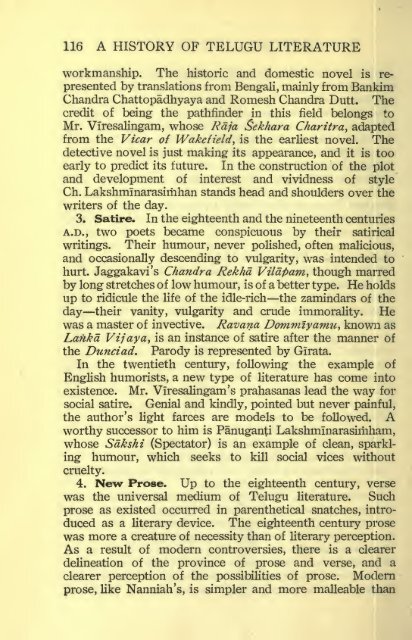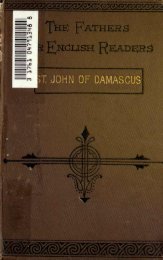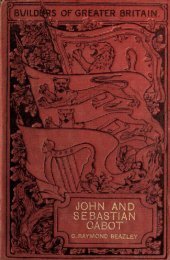A history of Telugu literature; - Cristo Raul
A history of Telugu literature; - Cristo Raul
A history of Telugu literature; - Cristo Raul
Create successful ePaper yourself
Turn your PDF publications into a flip-book with our unique Google optimized e-Paper software.
116 A HISTORY OF TELUGU LITERATURE<br />
workmanship. The historic and domestic novel is represented<br />
by translations from Bengali, mainly from Bankim<br />
Chandra Chattopadhyaya and Romesh Chandra Dutt. The<br />
credit <strong>of</strong> being the pathfinder in this field belongs to<br />
Mr. Viresalingam, whose Raja Sekhara Charitra, adapted<br />
from the Vicar <strong>of</strong> Wakefield, is the earliest novel. The<br />
detective novel is just making its appearance, and it is too<br />
early to predict its future. In the construction <strong>of</strong> the plot<br />
and development <strong>of</strong> interest and vividness <strong>of</strong> style<br />
Ch. Lakshmmarasimhan stands head and shoulders over the<br />
writers <strong>of</strong> the day.<br />
3. Satire. In the eighteenth and the nineteenth centuries<br />
A.D., two poets became conspicuous by their satirical<br />
writings. Their humour, never polished, <strong>of</strong>ten malicious,<br />
and occasionally descending to vulgarity, was intended to<br />
hurt. Jaggakavi's Chandra Rekha Vilapam, though marred<br />
by long stretches <strong>of</strong> low humour, is <strong>of</strong> a better type. He holds<br />
up to ridicule the life <strong>of</strong> the idle-rich the zamindars <strong>of</strong> the<br />
day their vanity, vulgarity and crude immorality. He<br />
was a master <strong>of</strong> invective. Ravana Dommlyamu, known as<br />
Lanka Vijaya, is an instance <strong>of</strong> satire after the manner <strong>of</strong><br />
the Dimciad. Parody is represented by Girata.<br />
In the twentieth century, following the example <strong>of</strong><br />
English humorists, a new type <strong>of</strong> <strong>literature</strong> has come into<br />
existence. Mr. Viresalingam 's prahasanas lead the way for<br />
social satire. Genial and kindly, pointed but never painful,<br />
the author's light farces are models to be followed. A<br />
worthy successor to him is Panuganti Lakshminarasirhham,<br />
whose Sakshi (Spectator) is an example <strong>of</strong> clean, sparkling<br />
humour, which seeks to kill social vices without<br />
cruelty.<br />
4. New Prose. Up to the eighteenth century, verse<br />
was the universal medium <strong>of</strong> <strong>Telugu</strong> <strong>literature</strong>. Such<br />
prose as existed occurred in parenthetical snatches, introduced<br />
as a literary device. The eighteenth century prose<br />
was more a creature <strong>of</strong> necessity than <strong>of</strong> literary perception.<br />
As a result <strong>of</strong> modern controversies, there is a clearer<br />
delineation <strong>of</strong> the province <strong>of</strong> prose and verse, and a<br />
clearer perception <strong>of</strong> the possibilities <strong>of</strong> prose. Modern<br />
prose, like Nanniah's, is simpler and more malleable than

















